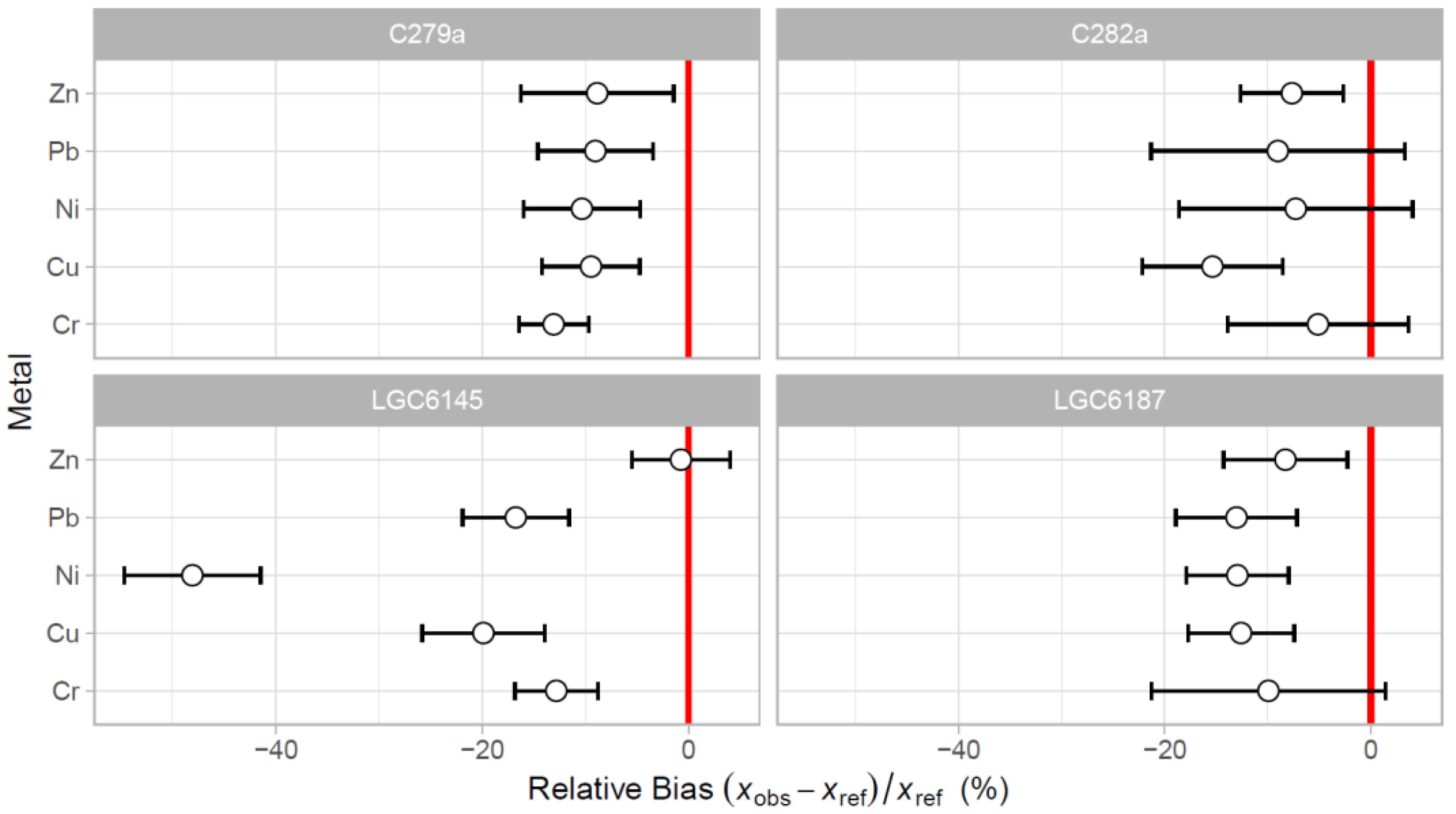Sampling, Detection and Uncertainty in Environmental Analysis—Challenges and Solutions †
Funding
Institutional Review Board Statement
Informed Consent Statement
Data Availability Statement
Conflicts of Interest
References
- Ramsey, M.H.; Ellison, S.L.R.; Rostron, P. (Eds.) Eurachem/EUROLAB/ CITAC/Nordtest/AMC Guide: Measurement Uncertainty Arising from Sampling: A Guide to Methods and Approaches, 2nd ed; Eurachem, 2019; Available online: http://www.eurachem.org (accessed on 5 October 2023).
- Ramsey, M.H. Sampling as a source of measurement uncertainty: Techniques for quantification and comparison with analytical sources. J. Anal. At. Spectrom. 1998, 13, 97–104. [Google Scholar] [CrossRef]
- Rostron, P.; Ramsey, M.H. Cost effective, robust estimation of measurement uncertainty from sampling using unbalanced ANOVA. Accredit. Qual. Assur. 2012, 17, 7–14. [Google Scholar] [CrossRef]
- Ramsey, M.H.; Ellison, S.L.R. Combined uncertainty factor for sampling and analysis. Accredit. Qual. Assur. 2017, 22, 187–189. [Google Scholar] [CrossRef][Green Version]
- Environment Agency. Performance Standard for Laboratories Undertaking Chemical Testing of Soil. Version 5. 2018. Available online: http://www.mcerts.net/ (accessed on 5 October 2023).
- Ellison, S.L.R.; Singh, M.; Cox, M.G. Measurement uncertainty for routine testing of metals in soil. In Good Practice in Evaluating Measurement Uncertainty—Compendium of Examples; van der Veen, A.M.H., Cox, M.G., Eds.; EMUE project report; EURAMET: Braunschweig, Germany, 2021. [Google Scholar] [CrossRef]
- Ellison, S.L.; Barwick, V.J.; Williams, A. Legislative limits below detection capability. Accredit. Qual. Assur. 2000, 5, 308–313. [Google Scholar] [CrossRef]
- ISO 17025:2017; General Requirements for the Competence of Testing and Calibration Laboratories. ISO: Geneva, Switzerland, 2017.
- Ellison, S.L.R.; Williams, A. (Eds.) Eurachem/CITAC guide: Quantifying Uncertainty in Analytical Measurement, 3rd ed; Eurachem, 2012; Available online: www.eurachem.org (accessed on 5 October 2023).
- Magnusson, B.; Näykki, T.; Hovind, H.; Krysell, M.; Sahlin, E. Handbook for Calculation of Measurement Uncertainty in ENVIRONMENTAL Laboratories, Nordtest Report TR 537, 4th edNordtest, 2017; Available online: www.nordtest.info (accessed on 5 October 2023).
- ILAC G8:2019; Guidelines on Decision Rules and Statements of Conformity. ILAC: Silverwater, Australia, 2019.
- Williams, A.; Magnusson, B. (Eds.) Eurachem/CITAC Guide: Use of Uncertainty Information in Compliance Assessment, 2nd ed; Eurachem, 2021; Available online: www.eurachem.org (accessed on 5 October 2023).
- Kuselman, I.; Shpitzer, S.; Pennecchi, F.; Burns, C. Investigating out-of-specification test results of mass concentration of total suspended particulates in air based on metrological concepts—A case study. Air Qual. Atmos. Health 2012, 5, 269–276. [Google Scholar] [CrossRef]

Disclaimer/Publisher’s Note: The statements, opinions and data contained in all publications are solely those of the individual author(s) and contributor(s) and not of MDPI and/or the editor(s). MDPI and/or the editor(s) disclaim responsibility for any injury to people or property resulting from any ideas, methods, instructions or products referred to in the content. |
© 2023 by the author. Licensee MDPI, Basel, Switzerland. This article is an open access article distributed under the terms and conditions of the Creative Commons Attribution (CC BY) license (https://creativecommons.org/licenses/by/4.0/).
Share and Cite
Ellison, S.L.R. Sampling, Detection and Uncertainty in Environmental Analysis—Challenges and Solutions. Proceedings 2023, 92, 70. https://doi.org/10.3390/proceedings2023092070
Ellison SLR. Sampling, Detection and Uncertainty in Environmental Analysis—Challenges and Solutions. Proceedings. 2023; 92(1):70. https://doi.org/10.3390/proceedings2023092070
Chicago/Turabian StyleEllison, Stephen L. R. 2023. "Sampling, Detection and Uncertainty in Environmental Analysis—Challenges and Solutions" Proceedings 92, no. 1: 70. https://doi.org/10.3390/proceedings2023092070
APA StyleEllison, S. L. R. (2023). Sampling, Detection and Uncertainty in Environmental Analysis—Challenges and Solutions. Proceedings, 92(1), 70. https://doi.org/10.3390/proceedings2023092070




